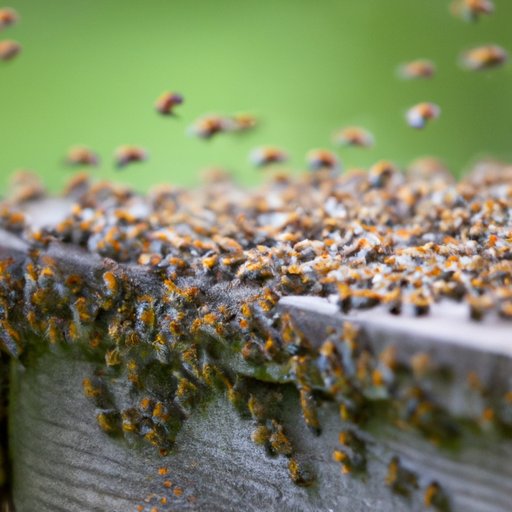Introduction
Bee swarming – the process of bees leaving their current hive and forming a large group – can seem intimidating to the uninitiated. But understanding the reasons behind this behavior can shed light on the fascinating intricacies of bee biology and the crucial role bees play in our environment. In this article, we’ll explore the biological and environmental reasons behind bee swarming, as well as beekeeping tips and common myths. By the end, you’ll have a deeper appreciation for these buzzing creatures and their complex behavior.
Scientific Approach: Explaining the Biological Reasons Behind a Bee Swarm
A swarm occurs when a new queen bee is born, and the old queen takes a portion of the hive’s workers with her to establish a new colony. The process involves a variety of biological factors, including the need for reproduction, overcrowding, and hive survival.
The instinct to swarm evolved over time as a way for bees to protect and ensure the continuation of their species. Swarming allows bees to start new colonies, which can increase genetic variation and reduce genetic bottlenecks.
Environmental Impact: How Swarms of Bees Affects the Ecosystem
The role that bees play in pollination and plant reproduction is absolutely crucial to our ecosystem. Pollination helps plants produce seeds and fruits, which in turn provide food and habitat for other animals, including humans. Bees swarming can impact their environment, both positively and negatively. For example, a swarm can help pollinate an area that may have had limited pollinators previously, but they can also disrupt human or animal activity in the area around their hive.
Swarms can also lead to overcrowding, which can lead to disease or pests in the hive.
Beekeeping: Tips to Prevent Bee Swarms and Keep Hives Happy
Beekeepers can help prevent swarming by managing their hives effectively. Regular hive inspections can help identify signs of overcrowding or queen cells, and proper hive maintenance can keep the bees happy and healthy.
If a swarm occurs, beekeepers can take steps to capture and relocate the bees to a new hive, or allow them to establish a new colony if that’s the best solution for their needs. They should also focus on avoiding the factors that caused the swarm in the first place and keeping an eye on their other hives to prevent future swarms.
Myth-Busting: Debunking Common Misconceptions about Bee Swarming
There are many myths surrounding bee swarming, including the idea that all swarming is bad or that swarming bees are always aggressive. Neither is true. Swarming can be a natural and important part of a colony’s lifecycle, and while swarming bees can be defensive, they are generally less aggressive since they are focused on establishing a new hive, not defending their current one.
Survival Instinct: Why Do Bees Swarm and What It Tells Us About Their Behavior
The instinct to swarm tells us a lot about bee behavior and their survival strategies. It allows bee populations to thrive by creating new colonies and increasing genetic diversity. It also highlights the importance of managing bee populations and understanding their behavior so we can protect them and the ecosystem they are a part of.
Conclusion
Understanding the reasons behind bee swarming is important for beekeepers, and for anyone interested in learning about the intricacies of these fascinating creatures and the ecosystem they support. By managing hives effectively and dispelling myths about swarming, we can promote healthy bee populations and a thriving natural environment.
